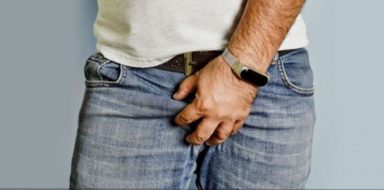Hearing Aids for Kids
How you and your child communicate sets the foundation for your relationship and can massively affect the rest of their life. Communication problems can be caught early if you know what to look out for. The sooner a hearing problem is addressed, the better outlook your child will have. If you notice hearing changes in your child, hearing aids for kids can help.
Hearing problems can cause further issues with speech, language and social skills. Therefore, screening tests start as young as four weeks of age to help prevent concerns later in life. Below we have listed what signs of hearing loss to watch for and the top five hearing aids for kids.
How to Buy Hearing Aids for Your Child
An audiologist will recommend the best fit and model of hearing aid for your child. However, some parents prefer to purchase hearing aids online. In this case, you will need to request a hearing evaluation record from the audiologist.
Medicare covers eligible children’s costs of hearing aids. The majority of states require health plans to pay for your child’s hearing aids.
5 Hearing Aid Options for Kids
Managing hearing loss can be an overwhelming process. There is so much information online, and it can be challenging to know where to start. However, once you know there is a problem, finding the best hearing aid for your child is the priority.
Here are the top-rated hearing aids for kids.
1. ReSound Hearing Aids for Kids
ReSound hearing aids come in a range of options to suit all children. These behind-the-ear (BTE) aids are equipped with a coating to prevent damage from earwax and moisture. An indicator light tells the child and you when the battery needs to be changed. In addition, these smart hearing aids come with an app that allows streaming and wireless connection. They come in many colors, but the options may be more muted than other brands. They are priced at $1,500 and above, depending on the model.
2. Oticon Hearing Aids for Kids
Oticon offers hearing aids to suit all ages. They offer discreet BTE designs and are compatible with an iPhone, controlling the settings and making everyday living easier. The Opn Play comes in a range of vibrant colors and fits. Oticon describes their hearing aids as “adventure proof,” which significantly benefits young children. They are priced at approximately $2,300, but this varies depending on the model.
3. Phonak Hearing Aids for Kids
The Phonak Sky model is explicitly designed for children of school age. However, they also offer models to suit babies and teens. Phonak asserts that the BTE Sky model provides an optimal listening experience in noisy classrooms and outdoor playgrounds. Their aids can connect to your smartphone and other Bluetooth devices for ease of control. The batteries they require are rechargeable and offer a full day of hearing. The model comes in a range of loud or discreet colors, and you can mix and match the hearing aid and hook. However, this is an expensive brand, costing upwards of $3,700 depending on the model.
4. Starkey Hearing Aids for Kids
Starkey is known to have a pediatric-specific program that tailors items for children. The company states that each hearing aid is built with an evidence-based design approach. They offer a range of colors to choose from and even have some glitter options. However, you cannot buy these directly from the manufacturer and have to find a local provider to source them. There is a massive range in price depending on the model, and they tend to run on the upper end of the price scale.
5. Widex Hearing Aids for Kids
If your child is diagnosed relatively young, Widex offers a model specifically designed for babies. Widex maintains that the Widex Baby 440 model delivers access to as many sounds as possible, helping to kindle your baby’s language and speech development. They also offer models for older children that your child can progress to as they grow. Yet, the color range is quite limited when compared to other brands. In addition, these aids are not smart hearing aids and, therefore, lack the connectivity that is attractive to modern families.
The key to effective treatment of anxiety in children is early intervention, so parents need to understand the signs of anxiety in children.
How to Care for Your Child’s Hearing Aids
Once your child has the correct hearing aids, proper maintenance and care are essential. The FDA recommends that you:
- Avoid exposure to heat and store them in a cool, dry place.
- Clean as instructed, avoiding solvents or alcohol.
- Avoid getting products, such as hairspray, on them.
- Replace dead batteries immediately.
- Turn off the hearing aids when not in use.
How to Know If Your Child Needs Hearing Aids
According to the Centers for Disease Control and Prevention, hearing loss occurs when part of the ear is not working the way it should. Unfortunately, as children are dependent on their parents, they usually can't tell you if there is a problem. Therefore, it is crucial to know the signs and symptoms of hearing loss.
Some signs of hearing loss are:
- Delayed or slurred speech.
- No reaction to loud noises.
- Not following directions.
- Not turning their head when you call their name.
- Always has the TV or music volume high.
While every child is different, there are specific points your child should be reaching the milestones of life by. If you are concerned that your child has hearing loss, you should go to your doctor as soon as possible to request a hearing test. Your child may require a hearing aid to manage their hearing deficits.
Your doctor can administer a hearing test on-site for your child. However, if they don’t pass this, they should be referred to an audiologist. This specialist will run several hearing tests with your child to test for hearing loss. The tests won’t hurt, and your child can even sleep through many of them if they like.
Following these tests, the audiologist will make a recommendation about whether your child requires hearing aids.







